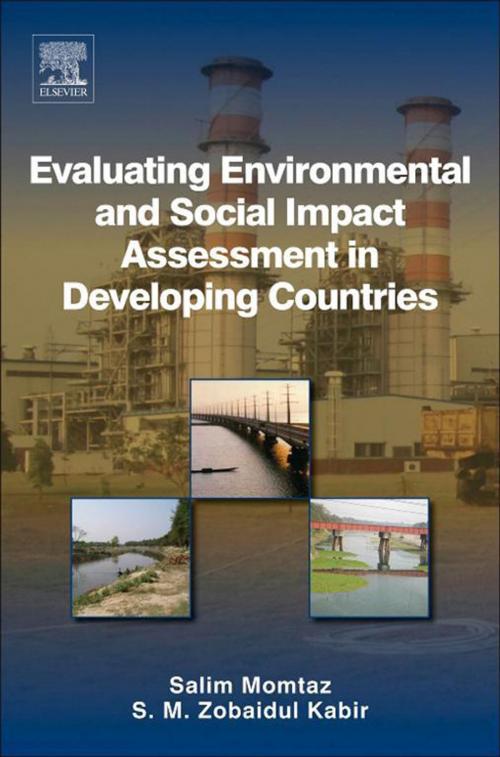Evaluating Environmental and Social Impact Assessment in Developing Countries
Nonfiction, Health & Well Being, Medical, Reference, Public Health, Science & Nature, Science, Biological Sciences, Environmental Science, Nature| Author: | Salim Momtaz, Zobaidul Kabir | ISBN: | 9780124080706 |
| Publisher: | Elsevier Science | Publication: | April 5, 2013 |
| Imprint: | Elsevier | Language: | English |
| Author: | Salim Momtaz, Zobaidul Kabir |
| ISBN: | 9780124080706 |
| Publisher: | Elsevier Science |
| Publication: | April 5, 2013 |
| Imprint: | Elsevier |
| Language: | English |
Evaluating Environmental and Social Impact Assessment in Developing Countries isa valuable reference book for practitioners and researchers conducting research in and developing studies on environmental science and management and environmental and social impact assessment. The book’s authors have developed and tested a new framework to evaluate environmental impact assessment (EIA) systems that may be adopted by most developing countries with EIA experience. Application of this framework will help determine if the EIA is achieving its intended goal of sustainable development in these countries. It also explains the reasons behind the strengths and weaknesses from which the development practitioners and international development partners can take lessons. This book will help the reader answer such questions as "What are the best forms of public participation?" and "How do we measure contributions to EIA procedure?" since it is based on direct experiences from a developing country that is struggling with many of these issues. Evaluating Environmental and Social Impact Assessment in Developing Countries provides further understanding of appropriate tools to evaluate environmental and social impacts of development initiatives especially in developing countries.
- Demonstrates the development of an integrated holistic method that presents new research in the field
- Offers a thorough analytical assessment of an EIA system in a developing country
- Presents valuable insights into how developing countries are coping with the new phenomenon of public participation and involvement in environmental decision making and what methods and techniques have been successful
- Includes a chapter on social impact assessment in developing countries with special focus on Bangladesh, providing valuable information applicable to developing countries
Evaluating Environmental and Social Impact Assessment in Developing Countries isa valuable reference book for practitioners and researchers conducting research in and developing studies on environmental science and management and environmental and social impact assessment. The book’s authors have developed and tested a new framework to evaluate environmental impact assessment (EIA) systems that may be adopted by most developing countries with EIA experience. Application of this framework will help determine if the EIA is achieving its intended goal of sustainable development in these countries. It also explains the reasons behind the strengths and weaknesses from which the development practitioners and international development partners can take lessons. This book will help the reader answer such questions as "What are the best forms of public participation?" and "How do we measure contributions to EIA procedure?" since it is based on direct experiences from a developing country that is struggling with many of these issues. Evaluating Environmental and Social Impact Assessment in Developing Countries provides further understanding of appropriate tools to evaluate environmental and social impacts of development initiatives especially in developing countries.
- Demonstrates the development of an integrated holistic method that presents new research in the field
- Offers a thorough analytical assessment of an EIA system in a developing country
- Presents valuable insights into how developing countries are coping with the new phenomenon of public participation and involvement in environmental decision making and what methods and techniques have been successful
- Includes a chapter on social impact assessment in developing countries with special focus on Bangladesh, providing valuable information applicable to developing countries















